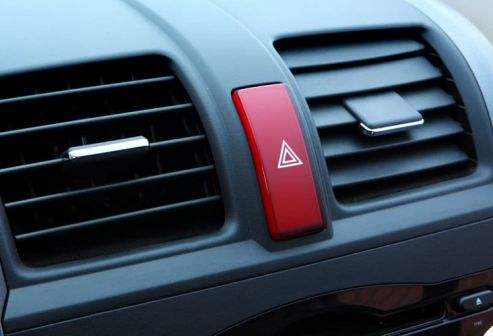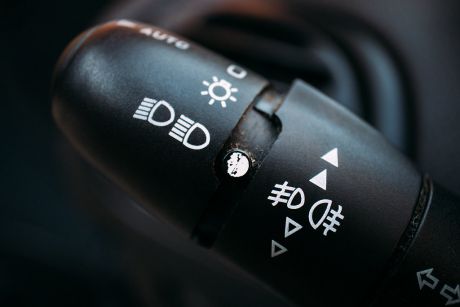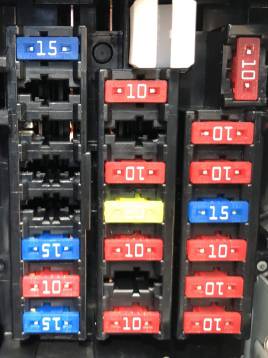Have you realized that there’s something wrong with your lights? Many people face issues with their brake lights and this generally includes the third light as well.
However, it’s possible that sometimes your brake lights stop working, but the third light continues to work just fine. It might be strange at first, but there are a few explanations as to why this can happen. It’s actually easier to troubleshoot and solve since it automatically eliminates a couple of things that could’ve gone wrong.
Here’s why brake lights not working but third light is:
- Emergency flashers have a socket or lamp issue
- Turn-Signal Switch gone bad
- Brake Light Fuses
We’ll get into the details of what could’ve gone wrong with each of these three issues, how you can identify the issue and then solve it.
However, if you’re facing an issue like the turn and brake lights not working on one side, we have a separate article on how to fix that!

Table of Contents
Top 3 Reasons Why Brake Lights Not Working But Third Light Is Working
The good news is that in this scenario, you don’t have to worry about the brake light switch since that is definitely not to blame. If it was, the third light wouldn’t be working! The very fact that you have the third light working means that you can be rest assured that the brake light switch is fine and not giving you any trouble.
So if not for the brake light switch, who are the prime suspects?
Here are some of the most plausible reasons why you’re facing issues with your third light but not your regular brake lights:
Reason #1: Emergency Flashers

There are a couple of things that could go wrong with your emergency flashers. Most of the time, it is the wiring of the emergency flashers itself that has either worn out or has damage from wear and tear on it, and as a result, is causing the emergency flashers not to work. You will have to check on the wiring of the emergency flashers to ensure that they are intact and working properly.
Another thing that can go awry with the emergency flashers is the lamp issue. Yes, sometimes your lights not working is just as simple as a lamp problem. A lot of people overlook this, but it could be as simple of an explanation just like your bedroom lightbulb — it’s worn out and or the fuse and short-circuited.
Solution: If you’re struggling with the wiring of the emergency flashers, you’ll have to obviously swap these out and get new wiring. However, try to analyze the cause for the wear and tear. Oftentimes, the reason for wires wearing out in a car is that it is brushing against a sharp edge in the inner machinery that is pressing against and cutting the insulation of the wire. In such a case, you don’t actually have to replace the entire wiring but just make sure that you have insulated it properly — either with a rubber tubing or a better wire itself.
If you’ve identified the problem as the lamp issue — you already know what to do. It is just as straightforward as sourcing the right bulb/lamp and replacing it yourself. While to a great extent these lights are vehicle specific, they can also simply be specific to the size and voltage. You will generally find these specifications on the side of the lamp written out, so it’s easy to find the replacements online.
Reason #2: Turn-Signal Switch Gone Bad

Now that we’re gotten the trivial troubleshooting out of the way, this reason could require much more of your attention. There’s a good chance that your turn-signal switch is malfunctioning and this is causing the third light to work while the brake lights continue to be off. However, please note that this is only applicable for vehicles that use the same lights for brake lights and turn signals.
Once you’ve established that your vehicle uses the same lights for brake lights and turn signals, you can work on understanding what’s wrong with your turn-signal switch. The reason this happens is that the brake lights and turn signal operate from the same circuit board. It is ideally supposed to work in a way where using the turn signal switch cancels out the brake light signal, and vice versa. Of course, this happens because both signals cannot occur at the same time: and the light has to ‘take turns’ to follow the commands of both signals.
Solution: What’s happening is that the turn-signal switch which has gone bad is now affecting the brake light switch even though it technically shouldn’t be. As a result your brake lights are not working properly.
You might be wondering why the third light is working. The answer is simple — the turn-signal switch has nothing to do with the third light switch, it never flashes along with the turn signal in this kind of system.
All you have to do in this situation is to replace the turn signal switch and your problems should automatically be solved.
Here’s a helpful video of how to replace your turn-signal switch.
Reason #3: Brake Light Fuses
Finally, if you’ve checked out the emergency flasher wiring, the lamps, the sockets, and even the turn-signal switch (if your vehicle uses that system), then we bring you to the final possibility. There are other wiring issues within your vehicle system.

You have to go old-school on this one and open up the compartment to check out the fuses in for the circuit. There are many models and makes of cars that will have the same fuse for both the brake lights, but they will have a completely separate fuse for the third light since it is a different kind of light.
Solution: This issue takes the longest to diagnose since there is quite a bit of ambiguity over what component is to blame. It also takes a considerable amount of skill to open up and look at the circuit board and be able to tell which fuse is broken. We strongly recommend that you refer to a visual demonstration before you attempt to do this on your own.
After you’ve narrowed down your decision, however replacing the fuse is the easy part.
Conclusion
No matter what the issue is: your emergency flashers, the turn-signal switch, or brake light fuses, replacing parts and repairing should be a breeze. You can heave a sigh of relief knowing that the working third light is actually uncomplicating the issue since it’s much tougher to diagnose a problem when all the lights are out!
Try to finish fixing your brake lights as soon as possible since it is illegal, not to mention dangerous to be driving around without functioning brake lights. Additionally, the cost of replacing any and all of the parts we mentioned is still lesser than the fine of getting pulled over without working brake lights (not to mention the cost and risk of getting into accidents). Better safe than sorry!
